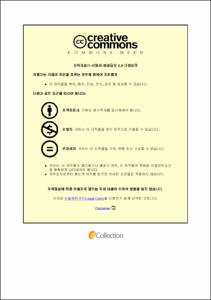Effects of Dietary γ-aminobutyric Acid in Juvenile Nile Tilapia (Oreochromis niloticus)
- Alternative Title
- 치어기 틸라피아 사료내 적정 γ-aminobutyric Acid
- Abstract
- The experiment was conducted to evaluate the effects of dietary gamma-aminobutyric acid (GABA) in Nile tilapia, Oreochromis niloticus. Triplicates of six groups of fish averaging 3.03 ± 0.07g (mean±SD) were randomly distributed in 18 rectangular 40 L volume tanks. A basal diet without GABA supplementation was used as control (CON), and the other five diets were prepared by adding 75 mg GABA (GB75), 75 mg GABA + 50 mg heat-killed Lactobacillus paracasei (GB75L), 150 mg GABA (GB150), 150 mg GABA + 50 mg heat-killed Lactobacillus paracasei, (GB150L), and 600mg GABA (GB600) of per kg diet. The results showed weight gain, GB75L was significantly higher than those fish fed CON and GB600 (P<0.05), the specific growth rate of fish fed GB75L, GB150, and GB150L diets were significantly higher than those fish fed CON and GB600 diet (P<0.05). SOD of fish fed GB75L, GB150L and GB600 were significantly higher than fish fed the CON and GB75 diets. Challenge test against Aeromonas hydrophila showed fish fed diets GB75, GB75L and GB150L were significantly higher on disease resistance than those fish fed GB150 and CON. Broken line analysis for weight gain showed that the optimum dietary GB level could be 158 mg kg-1 diet in juvenile Nile tilapia.
- Issued Date
- 2019
- Awarded Date
- 2019. 2
- Type
- Dissertation
- Publisher
- 부경대학교
- Affiliation
- 부경대학교 글로벌수산대학원
- Department
- 글로벌수산대학원 국제수산과학협동과정
- Advisor
- Sungchul C Bai
- Table Of Contents
- 1. Introduction 1
2. Materials and Methods 4
2.1. Experimental diets 4
2.2. Experimental fish and feeding trial 7
2.3. Sample collection and analysis 8
2.3.1. Growth performance 8
2.3.2. Hematological parameters 9
2.3.3. Non-specific immune responses 10
2.3.4. Proximate analysis 11
2.4. Challenge test 11
2.5. Statistical analysis 12
3. Results 13
3.1. Growth performance 13
3.2. Proximate body composition 22
3.3. Hematological parameters 27
3.4. Non-specific immunity 35
3.5. Bacterial challenge test 38
4. Discussion 40
5. References 43
- Degree
- Master
- Appears in Collections:
- 글로벌수산대학원 > 국제수산과학협동과정
- Files in This Item:
-
-
Download
 Effects of Dietary γ-aminobutyric Acid in Juvenile Nile Tilapia (Oreochromis niloticus).pdf
기타 데이터 / 624.75 kB / Adobe PDF
Effects of Dietary γ-aminobutyric Acid in Juvenile Nile Tilapia (Oreochromis niloticus).pdf
기타 데이터 / 624.75 kB / Adobe PDF
-
Items in Repository are protected by copyright, with all rights reserved, unless otherwise indicated.